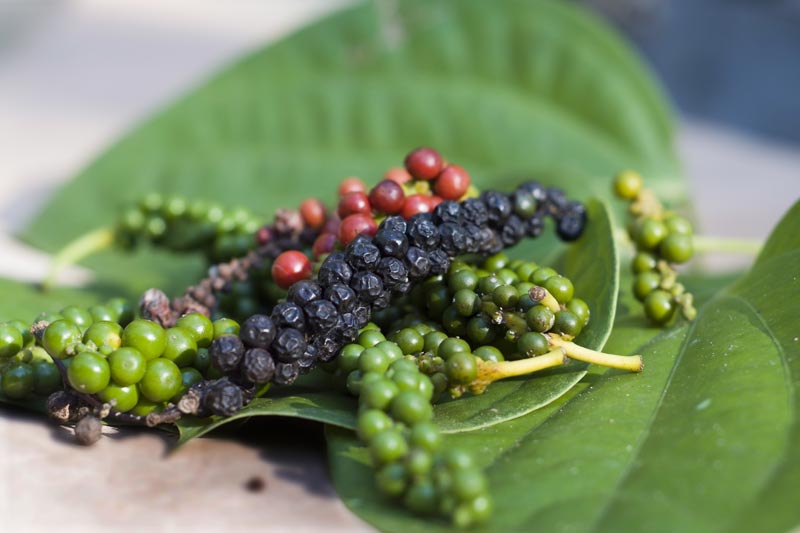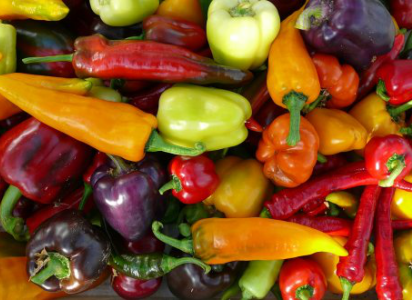Stuffed bell peppers are an enduring family favorite— healthy, vibrant, wholesome, and wonderfully satisfying. Their cheerful colors make them look as good as they taste, and the savory beef-rice-tomato filling has that comforting, old-fashioned flavor that never gets old.
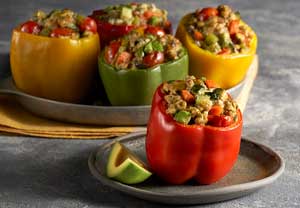
This healthy recipe of stuffed bell pepper keeps the simplicity of the classic while folding in a few techniques and flavor touches from modern kitchens—like sautéed aromatics, melted cheese, and optional add-ins to transform it into a healthy vegetarian dish. From start to finish, these come together in under an hour, perfect for an easy weeknight dinner that feels like something special.
Ingredients
Total Time: About 55–60 minutes (Prep: 25 min | Bake: 25–30 min)
Servings: 4–6 stuffed peppers
- 4–6 large bell peppers (any color; red, orange, and yellow are sweeter, while green pepper adds a mild bitterness)
- 1 lb (about 500 g) lean ground beef (or plant-based meat)
- 1 medium onion
- 2 cloves garlic
- 1 cup cooked rice
- 1 can tomato sauce
- 2 Tbsp olive oil
- 1 tsp salt
- ½ tsp black pepper
- 1 tsp Italian seasoning
- ¼ tsp smoked paprika
Step 1
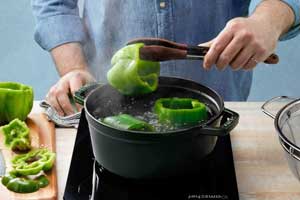
- Preheat your oven to 350°F (175°C) and set aside a large rectangular baking dish that can hold all the peppers upright.
- Trim and clean the peppers: Slice about ½ inch from the tops of each bell pepper, keeping them intact as little “lids” if you like. Remove the seeds and membranes inside.
- Parboil for tender peppers (optional but recommended):
Bring a large pot of water to a rolling boil. Drop the cleaned peppers into the boiling water and cook for 3–4 minutes—just enough to soften them slightly without turning them mushy. Drain and immediately rinse under cold water to stop the cooking. This quick blanching step ensures the peppers bake evenly and stay vibrant in color.
Set aside to cool slightly while you prepare the filling.
Step 2: Cook the Filling

- Heat olive oil in a large skillet over medium heat. Add the chopped onion and sauté until translucent, about 3–4 minutes. Add the minced garlic and cook for another minute, stirring to avoid burning.
- Add the ground beef to the skillet, breaking it apart with a wooden spoon. Cook until browned and no longer pink—about 8–10 minutes. Drain off excess fat to keep the filling light.
- Stir in half the tomato sauce, then add the cooked rice, salt, black pepper, and Italian seasoning. If you’re using smoked paprika or chili flakes, sprinkle them in now.
- Reduce the heat and let the mixture simmer for a few minutes until the flavors come together and the sauce thickens slightly. Taste and adjust seasoning as needed, some people like a touch more salt or a pinch of sugar if the tomatoes are very acidic.
Step 3: Fill the Pepper
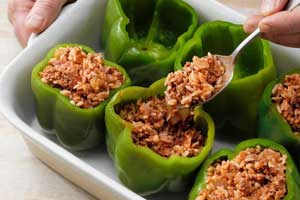
- Arrange the prepared peppers upright in your baking dish. If any won’t sit flat, trim a very thin slice from the bottom to help them balance.
- Spoon the hot beef-rice mixture into each pepper, packing it down gently with the spoon. Fill them all the way to the top—slightly mounded is perfect.
- Drizzle the remaining half of the tomato sauce over the tops. This keeps the filling moist during baking and adds that signature saucy finish.
Step 4: Bake
- Cover the dish loosely with aluminum foil. This traps a bit of steam to soften the peppers while they bake.
- Place in the oven and bake for 25–30 minutes or until the peppers are tender when pierced with a knife.
- For softer peppers or larger ones, add an extra 5–10 minutes.
- For firmer peppers, bake uncovered the whole time.
Step 5: Serve and Garnish
Remove the peppers from the oven and let them rest for 5 minutes—they’ll hold together better.
Transfer each pepper carefully to a plate or shallow bowl. Spoon a bit of the sauce from the bottom of the baking dish around each serving for color and moisture.
Top with a dollop of sour cream, a sprinkle of chopped parsley, and, if you like, a bit more melted cheese. Serve immediately while hot.
Chef’s Note
Bell peppers are a staple in global cuisine, from stuffed bell pepper recipes to roasted and sautéed pepper dishes. Green peppers add mild bitterness, while red, yellow, and orange varieties bring natural sweetness. They shine in Mediterranean favorites like Lebanese moussaka, where peppers, eggplant, and chickpeas simmer in a rich tomato sauce. Versatile and flavorful, bell peppers elevate any meal.

